A Conversation with Art Taylor and Tara Laskowski
by Paula Gail Benson
Annually, the Short Mystery Fiction Society (SMFS) recognizes excellence by awarding the Derringers (four categories based on word count—flash, short short, long short, and novelette). This year, an award is being given for best anthology.
In addition, the SMFS presents awards for a body of work. Art Taylor, who is well known for both his award-winning fiction and his extraordinary teaching skills, has been named the recipient of the Edward D. Hoch Memorial Golden Derringer Award for Lifetime Achievement.
Both Art and his wife Tara Laskowski are phenomenal authors. Today, as we celebrate Art and short fiction, they were kind enough to stop by to discuss their life and work.
 Welcome Art Taylor and Tara Laskowski to The Stiletto Gang!
Welcome Art Taylor and Tara Laskowski to The Stiletto Gang!
- What is it like to write in a two-author household? What kind of schedule do you maintain to balance work, writing, and family life?
Tara: Art and I are answering these questions in a shared Google doc, and I think it’s telling that even though this is the first question you ask, we both skipped over it and answered all the other ones first. This is because, I think, we both are having a very hard time lately finding any sort of balance between work and creativity and life. It can be very hard to tap into creative energy when you are being pulled in so many other directions.
That said, we are fortunate to have such rich lives, filled with people we love and stories we want to tell. So I can’t complain too much!
Art: Agreed! And so funny Tara pointed this out. Sometimes I feel like we’re struggling to get through the “must-do” lists most days, much less finding time for the leisure of creative work. But then I have to remind myself how much we have to be grateful for in so many directions—and somehow we do manage to be productive in our literary lives. (You just don’t want to see how the sausage is made.)

Tara, Art, and Dash
- Your son is named for a famous writer and is fabulously talented in design. What questions does he ask about your work and your author companions? (I know he contributed a title to one of Donna Andrews’ books.)
Tara: He did! He named Donna’s Christmas title, Owl Be Home for Christmas. He was so proud that he told all his friends in his elementary class, and one of his friends asked for it for Christmas that year. (She got it!)
Dash is now 13, and we continue to be proud of him every day. He’s really talented with architectural drawing. In fact, he helps me visualize the settings of my novels by drawing maps and floor plans for me.
Art: Dash is an amazing artist and a gifted musician too—throwing himself into both disciplines with energy and enthusiasm. I have to stress these are areas of creativity that neither Tara nor I have much skill in, so not sure where he got these interests and abilities. But I myself often hold him up as a model of how we should approach our creative work—with a sense of play and passion.
- Each of you has experience working as an editor. What qualities make a good editor for an anthology (like Murder Under the Oaks) or a periodical (like Smoke Long Quarterly)?
Art: Openness to different kinds of stories beyond your own preferences for subject or style. An ability to see what a story is trying to do and to help a writer achieve their vision for it rather than push your own visions or ambitions on it. Some skill in communicating with writers where a story needs work—and then helping them find their own path to fixing issues.
Tara: I agree with everything Art says here. I’d also add—and this might seem like basic 101 stuff—that an editor has to be timely and dedicated. I’ve seen a lot of cases where someone decides, “Hey! I think I want to start an online journal today!” and they don’t realize how much time it takes and sort of just give up after a few months or a year or two. Which is a shame for the people whose stories they publish, as once a publication goes away (or goes stagnant), that work kind of disappears, too.
- When organizing collections of your own work, what do you think about? How do you determine what stories work well together and in what order they should appear?
Art: I actually just taught a course on Short Story Collections at George Mason University, looking at the architecture of several collections—linked stories, the novel in stories, but also those books that don’t have direct connection between the stories but return to similar themes or concerns. I want to shout-out both Sidik Fofana’s Stories from the Tenants Downstairs and Ananda Lima’s Craft: Stories I Wrote for the Devil as excellent collections, and for folks interested in the variety of ways a collection might come together, do try to find David Jauss’s “Stacking Stones: Building a Unified Short Story Collection” from the March/April 2005 issue of The Writer’s Chronicle.

With my latest collection, The Adventure of the Castle Thief and Other Expeditions and Indiscretions, I started to subtitle it “Stories Light and Dark”—to emphasize up front the range of tones here—and I tried to structure it as a movement from lighter, more traditional mysteries like the title story into darker territory: heavier themes, noir stylings, even a little bit of edgy speculative fiction. So you guide a reader through a bit, step by step.
Tara: When I first started thinking about collecting stories, I thought it was just a matter of picking your best ones until you had enough pages to make a book. That, of course, was silly. I’ve read so many excellent collections of stories since then (extra shout-out to Craft–that book is amazing!) and understand that creating a resonant story collection is a true art. When you get a good one (I’ll also shout-out Jeannette Winterson’s Night Side of the River, which I reviewed for Washington Independent Review of Books), you feel like you’re reading a cohesive text, individual stories that bounce off one other and echo and spiral off in ways that are truly inspiring.
I wouldn’t go as far to say my short story collections are true works of art, but they do both center around a theme and variations on that theme. For Bystanders, I pulled together stories that looked at the ways that acts of violence have a ripple effect. How are we affected by something really terrible that happens to someone else? So that collection, for example, has a story about a woman whose coworker is murdered, and she becomes obsessed with the boyfriend who might’ve killed her friend. It also has a story about a woman who witnesses an old man hitting and killing a young boy with his car, and her reaction to that horrifying moment causes her to do some dramatic things in her own marriage.
My other collection, Modern Manners For Your Inner Demons, is a weird little book that was incredibly fun to write. In that book, I play around with the idea of etiquette. I call it my dark etiquette book. It all sparked when I asked myself the question, what would it look like if we wrote etiquette guides for our sins and shames? So each story is centered around a “forbidden” or “shameful” subject, like The Etiquette of Adultery, The Etiquette of Homicide, etc.
- Art, your novel in short stories, On the Road with Del & Louise, won the Agatha Award for Best First Novel. Have you considered writing other novels using this format?
Art: I have, actually! The short story seems to match how I think and work—a form I very dearly love—but I also feel the pull toward a book-length project for a variety of reasons: the larger canvas, room for bigger ambitions, and then the fact that novels have greater opportunities for reaching readers, a longer shelf life too generally. Going back to the Fofana and Lima books I mentioned, earlier I love how each of them capitalizes on the short story—a variety of characters, subjects, storytelling approaches, perspectives—while also building a larger narrative. The best of both words in so many ways. In my own work, I’ve had the idea for a while for a novel in three linked novellas, but it’s only partially written and outlined so far. We’ll see.
- Tara, you have won the Agatha both for a novel and a short story. What are the different considerations you make with each form?
Tara: I’m a short story writer at heart. Really a flash fiction writer. The shorter the better. Novels are incredibly painful for me to write. Just ask Art how many times I’ve burst into tears over them. I like small moments. I like tinkering with phrases and mood. It’s hard to do that with a novel and not take 700 years to write one.
That said, there’s delight and awe in writing both forms. You can really dig into characters and build a world in a novel in ways you can’t do in short form.
- You have written a short story together. What was that experience like? Might you collaborate again?

Art: We’ve actually written two short stories together now—which I’m emphasizing because I kept wondering if the first one was going to break us up! Our writing processes are very, very different—which became starkly clear with that first story, “Both Sides Now” for the anthology Beat of Black Wings, featuring crime fiction inspired by the music of Joni Mitchell. Our story was a series of letters between a husband and wife—each of us writing a letter and then the other responding, shuttling the draft back and forth between us that way. Tara wrote each of her sections very quickly, then sent it my way, and… well, that ellipsis doesn’t hardly suggest how very long it took me to write my next section. Our next story went better—since the structure didn’t mean that Tara was waiting on me at every turn.
Tara: The second story we wrote together, which was published in Black Cat Mystery Magazine last year, was inspired by the game Clue: “After Their Convictions, Six Murderers Reflect on How Killing Mr. Boddy Changed Their Lives.” We thought it would be fun to take each of the classic characters from the game—Mrs. White, Professor Plum, Miss Scarlet, Mr. Green, Miss Peacock, and Colonel Mustard—and explore what happens to them after they are revealed to have killed Mr. Boddy. What was their motive for killing him? And what happens to them after? We split up the characters among us and each wrote small vignettes from the point of view of the characters. It was a lot of fun.
- Do you have advice for writers who want to concentrate on short stories?
Art: Familiarizing yourself with the form is key; one year, I read all of the Edgar Award winners for Best Short Story—and I learned so much about the diversity of approaches that writers can take. Later, I was fortunate to be invited to lead a four-part webinar, “Short and Sweet,” on writing short stories for Sisters in Crime, where I tried to share some thoughts at more length. It’s in the Webinar Library at https://www.sistersincrime.org for SinC members’ access.
- What are your current projects and what new publications do you have available?
Tara: I am working on my fourth novel, The Cold Read, which will be out in November 2026 and involves a cult horror movie cast returning to the abandoned ski lodge where they filmed the flick that made them all famous.

Art: My latest collection is The Adventure of the Castle Thief and Other Expeditions and Indiscretions, nearly two years old now. My story “Dark Thread, Loose Strands” from Ellery Queen’s Mystery Magazine last year has been selected by Steph Cha and Don Winslow for this year’s Best American Mystery and Suspense, forthcoming this fall. And I have a couple of other stories coming out ahead this year, including “Dalliances” in a new collection from Crippen & Landru, tentatively titled Double Crossing Van Dine, in which contributors systematically break 20 rules of mystery fiction set out by S.S. Van Dine—a companion to School of Hard Knox, which took the same approach to the rules established by Monsignor Ronald Knox!
Thank you, Art and Tara, for being with us today. To read all of Art and Tara’s work, check out their websites at: https://arttaylorwriter.com/ and https://taralaskowski.com/
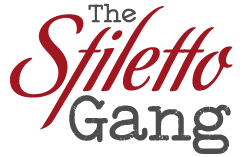
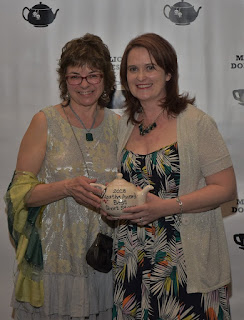
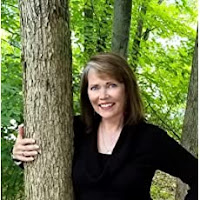

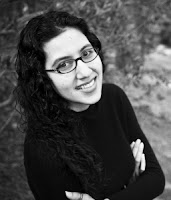
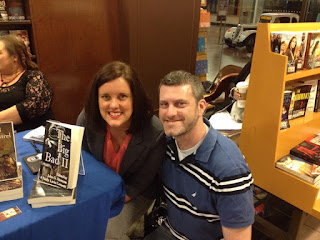
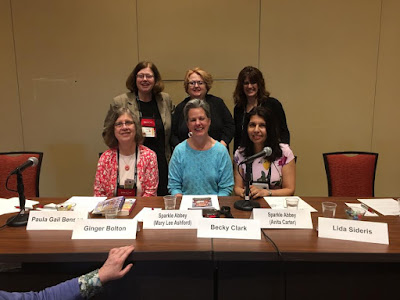


Interesting to read the contrast in your writing styles when working together. In some ways, I wasn’t surprised because I find your works so different, but both exhibit such attention to detail and precision that I would have thought the making of the sausage would have been similar.
Given how different your stories are, it didn’t surprise me that your processes are so different. Not being a flash reader, I didn’t realize that was Tara’s preferred medium — which makes me agog that someone who prefers writing so short does such a fine job writing novels!
Best to both of you.
Really enjoyed the interior glimpse into the processes behind two highly respected mystery writers. Thank you, Art, Tara, and Paula.
Thanks for this peek into the creative life of two masters!
Debra, Jim, Saralyn, and Gay, thank you so much for your comments. Tara, Art, and Dash are such special people. I was so very pleased Art and Tara had time to answer these questions. And the responses–Gay, you are right. They are masters of the craft. Reading their remarks is educational, edifying, and exciting!
Congratulations, Art, on the Golden Derringer Award. Best wishes, Tara, on your next novel, The Cold Read. May you both continue to thrive in life and on the pages! I hope you and Dash have a great summer!
This is an absolutely outstanding interview. I don’t know Tara, but I do know Art, and there is not a nicer man on the planet. It was wonderful to hear about their processes. Thank you for sharing this (and I will be doing so).
How wonderful. I salute your camaraderie and at the same time your marriage surviving 🙂 I also commend you both when talking about editing how you strive to help the author realize their vision and and not influence your own. That is hard to do, but only proves you’re the consummate pros. Dash is adorable. Best of luck to him!
Fabulous interview with two of my favorite writers (and people) in the mystery community!!
mrw2u7